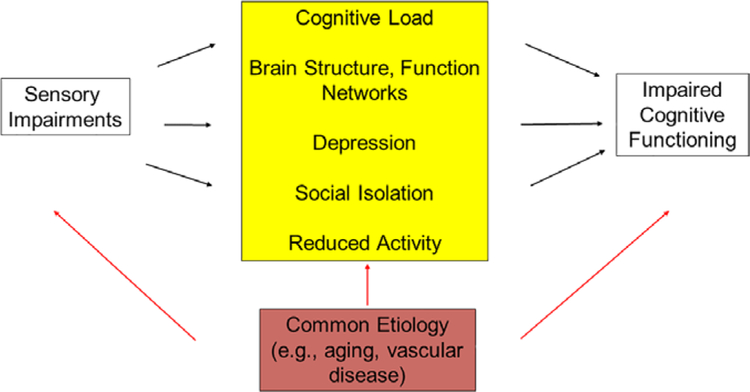Figure 1.
Hypothesized relationships that may explain the epidemiological link that has been described between sensory (vision, hearing) impairments and cognitive impairment. The yellow box depicts possible causative pathways by which sensory loss leads to reduced cognitive performance. For example, sensory impairment may increase “cognitive load,” or the total amount of demand placed on the brain at any given time. Assuming cognitive capacity is a fixed resource, high cognitive load could impair performance on cognitive tests. Another possibility is that sensory impairment interferes with physical or cognitively stimulating activities (e.g., exercise, reading) and that the lack of activity has a detrimental effect on cognitive function. The red box depicts the possibility that the relationship between sensory impairment and cognitive impairment is correlational. If this is the case, the impairments may co-occur more frequently than expected because they share common risk factors (e.g., age, smoking, genetics). Any or all of the pathways depicted here may explain a link between sensory and cognitive impairment.

